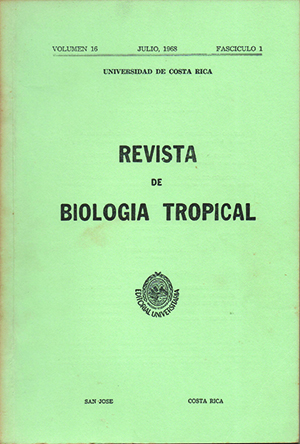Abstract
Specimens of populations of the terrestrial isopod crustacean species Philoscia pruinosa (Richardson, 1913) from Costa Rica were found to contain two anomalous morphotypes in addition to normal animals. In the first morpho type, the anomaly consisted of an elongation of the body and pleopods, of both males and females, with a general loss of body pigmentation. A range of differences in morphology occurred between the extremely anomalous isopods and the normal specimens. In general, specimens with the most elongate bodies and pleopods had no pigment, and the differences were positively correlated in degree with each other. It was thus impossible to establish exact criteria of classification of the morphologically anomalous animals from the small collections made. Gravid females with eggs and embryos in their marsupia were regulady found among the morphologically anomalous females.
The second group of anomalous isopods consisted of pigmentless females. No males were found and it is probable that the specimens represented a monogenic or a parthenogenetic race of the species. The pigmentless females had bodies that were more elongate than normal females and the females formed a group that was quite distinct from, without intergrading with, the normal animals. Gravid females with eggs and embryos were found, and the population structure biology of the pigmentless females was very similar to that of the normal group. Since the difference was one of kind, rather than degree, the population is giveu the subspecies name alba.
An abnormality of the merus of the seventh walking leg of an otherwise normal male is briefly described and illustrated.






